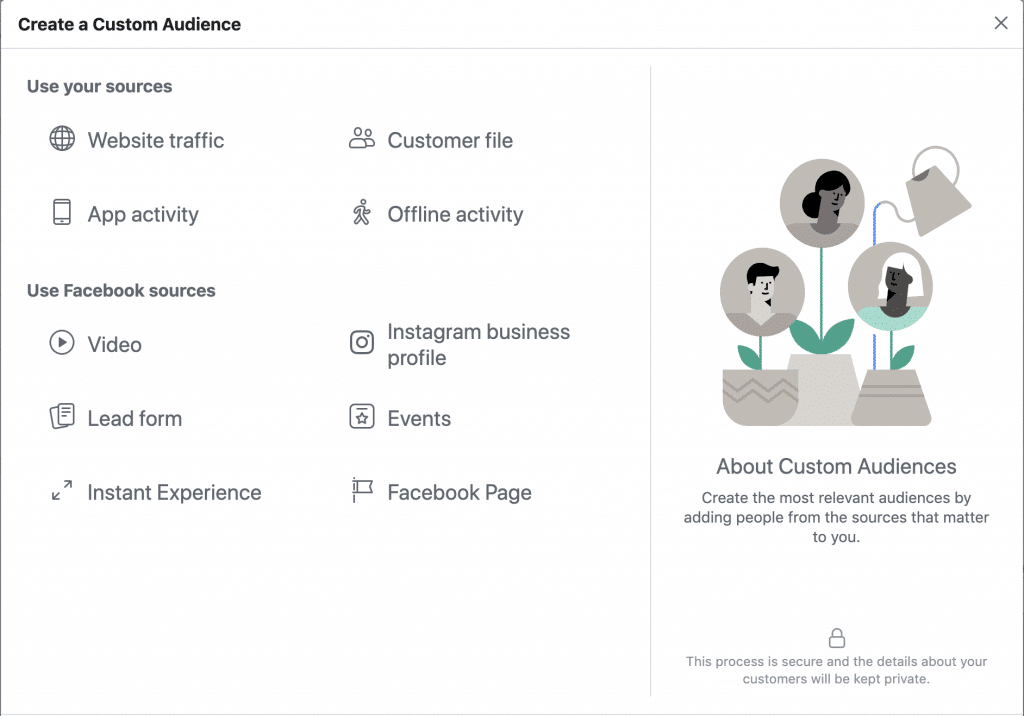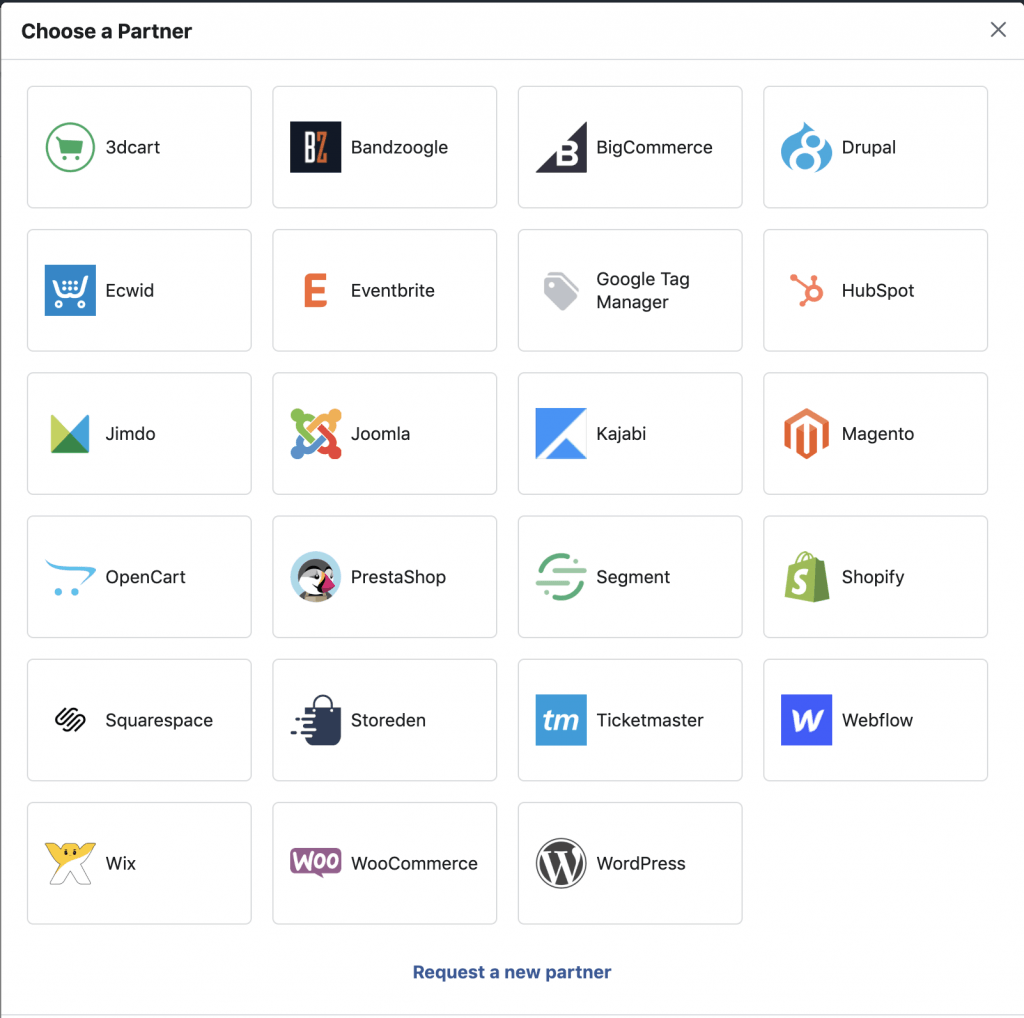One often overlooked tool provided by the Business Manager is the Facebook Audience Builder. There are three main Facebook Audience “types”, which can be configured in about a billion different ways.
Don’t forget to catch the video explanation at the end of this post!
Here we’ll answer some of the main questions concerning Facebook Audiences and provide some tips on the best ways to configure them.
What’s the purpose of a Facebook Audience?
The primary reason to use Facebook Audiences is to accurately target ads to your past and future customers.
The worst thing you can do on a Facebook Ad is to spend your hard-earned cash showing an ad to a bunch of people who will NEVER convert and become a customer. That’s a waste of money!
If your audiences are correctly configured, you end up spending your money much more effectively and efficiently, resulting in a better ROI on your ad spend! This is a great way to spend your money!
Facebook really wants you to use the audience builder tool, too. It makes everyone look better, including Facebook, when your audiences are dialed in because your ads actually perform better.
What is a Facebook Audience?
A Facebook Audience is a collection of Facebook ID’s that are grouped together by you by using Facebook’s Audience Builder.
At the time of this writing, there are three different kinds of Facebook Audiences:
- Custom Audience
- Lookalike Audience
- Saved Audience
Using these three audience types you can really target almost anyone imagined.
What is a “Custom Audience” on Facebook?
A custom audience is an awesome type, but it has a TON of variations! There’s sooooo much you can do with a custom audience it’s hard to cover them all here in a single blog post. Here’s a screenshot of the currently available options:

I’ll quickly cover a few of our favorites from this list, but honestly… they’re all favorites.
Custom Audience using Website Traffic from Facebook Pixel
The Website Traffic custom audience is an ABSOLUTE MUST! Hopefully you have previously set up your Facebook Pixel, that is the thing Facebook uses to gather information about your website traffic.
If you’re using WordPress, configuring your Facebook Pixel is pretty easy using a plugin. Two favorites of ours are PixelYourSite and Pixel Caffeine. They really simplify the process of not only getting the pixel on your site, but firing the correct events when your users make specific actions, like adding things to a cart or when they check out. Without using a plugin, custom events are a little complicated.
There are a lot of other options for non-WordPress sites, and Facebook provides instructions for many of them right on the setup wizard:

Using Facebook Pixel data allows you to retarget your website visitors six ways from Sunday. There are seriously so many great ways to use that ability, you need to have that setup.
Custom Audience using a Customer File
Inside the customer file option, you are allowed to upload a list of email addresses to Facebook, who then matches them with the Facebook profiles and allows you to target them directly.
There is also a really slick option to import directly from MailChimp (and only MailChimp 🤷🏼♂️). We use that option regularly.
Facebook DOES NOT allow you to SEE the associated Facebook profiles. That information is kept private. But you are probably already thinking of numerous ways to use that ability. I surely am.
All the other Custom Audience Options
Depending on your needs, some of the other audience options will be more important to you than the ones I’ve outlined above. Think about each of them as a way to gather groups of people that have interacted with you in some way.
Most custom audiences are people that know about you in some way (or at least they should know about you). They either gave you an email address or they interacted with a digital property you own.
Note: you CANNOT target people who have visited a competitors website. Facebook doesn’t allow that for the same reason you wouldn’t want your competitors to be able to target you.
What is a Lookalike Audience on Facebook?
Lookalike Audiences on Facebook allow you to use the data Facebook gathers on your Custom Audiences and target other people who do not yet know you but have similar traits to your Custom Audience.
Lookalike audiences are extremely powerful! Just think about it in a real-world scenario.
You own a brick and mortar store, with no online presence, selling different types of spices. You are very popular and have a lot of in-store customers. imagine going to any other marketing medium, let’s say billboard, and explaining, “Okay, I have this list of customers that bought something from my store. All I have is their driver’s license number. Can you find me a bunch of people that are just like them that will also want to purchase my spices?”
Nope, nope, and nope. Ain’t gonna happen. Facebook’s ability to find other customers in this way is incredibly unique and very powerful. USE IT!
What is a Saved Audience on Facebook?
A Saved Audience on Facebook is the ability on Facebook to define a user’s demographics, interests, and location and run ads to that group. Saved Audiences are one of the oldest, and most common, methods of targetting users for ads.
This audience type, while being the oldest, is still incredibly powerful. You’ve maybe noted that the previous two audience types required you to have some kind of customer list to start with.
A lot of businesses, old and new, don’t have any collected customer information for whatever reason. This is very very common, we see it all the time at our agency.
A Saved Audience works great for a business that doesn’t have customer email addresses or pixel data to start from.
You start a Saved Audience by first choosing the location you want to target, some very basic demographic information like age and gender, then choosing what interests to include or exclude from that group of people.
When done correctly, you can really target a potential customer extremely well with a Saved Audience.
What is the value of a Facebook Audience?
A properly configured Facebook Audience can make or break your advertising budget.
Advertising dollars spent targetting an inaccurate audience of people result in a poor ROI.
To use traditional marketing as an example again, running an ad to an inaccurate audience would be comparable to purchasing billboard space on a billboard in Ely, NV, when you’re actually selling things in Boulder City, NV. Yes, very few people may drive through Ely and see your billboard, which MIGHT result in them purchasing something from you next time they’re in town.
Those same marketing dollars would be far better spent buying a billboard in Henderson or Boulder City itself because you know the audience is much more likely to become a customer over the person in Ely.
Using Facebook audiences puts your ads in front of the right people at the right time, hopefully causing them to take action on your ad and become a customer. Aka, great Facebook Ad ROI.
When targetting is poor, so are the results. There is a direct correlation.
Can I use my New Audiences on Instagram?
The answer as to whether you can use Facebook Audiences on Instagram is a resounding yes! Facebook owns Instagram and they didn’t want to reinvent the wheel for that platform too (thank heavens). So they built Instagram’s advertising options right into the Facebook Business platform.
With a few quick clicks, your awesome audiences are now able to be used on ads being served to both Facebook and Instagram users.
A word to the wise, targetting users of both platforms with the same content is sometimes not the best strategy. The experiences are different for people on both platforms, so you’ll want to tailor your ad content accordingly.
Can I explain Facebook Audiences Using… Legos?

While thinking about what to write here, I was trying to come up with an analogy in my head that would help explain Facebook Audiences as easy as possible.
That got me thinking about buckets, and each audience type is another bucket… that lead me to think… but how can I put people in buckets? Then it hit me… LEGOS! So I shot a text to my friend who puts out awesome Lego YouTube videos and asked to borrow a few of his Lego people for a demonstration. Here’s what came of it:
